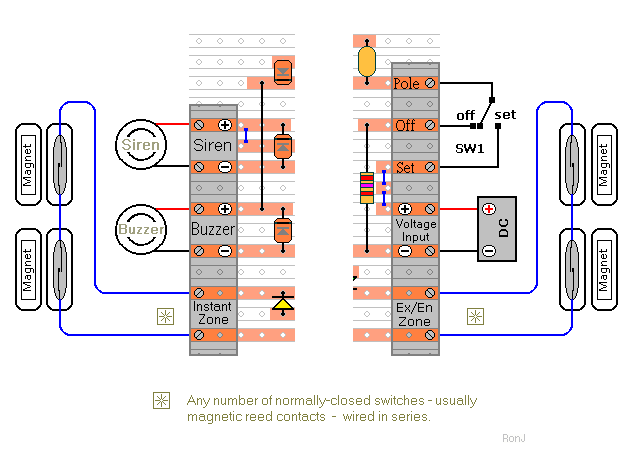The terminals are a good set of reference points. To fit them - you may need to enlarge the holes slightly. Then turn the board over and use a felt-tip pen to mark the 27 places where the tracks are to be cut. Before you cut the tracks, use the "actual size" drawing to
Check That The Pattern is Correctly Marked .
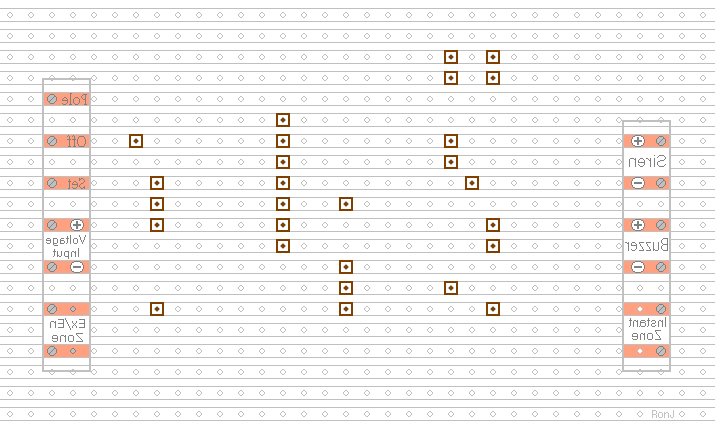
Actual Size
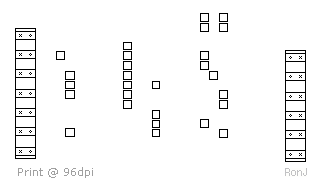
When you're satisfied that the pattern is right - cut the tracks. Make sure that the copper is cut all the way through. Sometimes a small strand of copper remains at the side of the cut and this will cause malfunction. Use a magnifying glass - and backlight the board. It only takes the smallest strand of copper to cause a problem. If you don't have the proper track-cutting tool - a 6 to 8 mm drill-bit will do. Just use the drill-bit as a hand tool - there's no need for a drilling machine.
Next make and fit the
Eight Wire Links. I used bare copper wire on the component side of the board. Telephone cable is suitable - the single stranded variety used indoors to wire telephone sockets. Stretching the core slightly will straighten it - and also allow the insulation to slip off.
Then fit the ten resistors. The resistors are all shown lying flat on the board. But those connected between close or adjacent tracks are actually mounted standing upright.
See The Photo Of The Prototype .
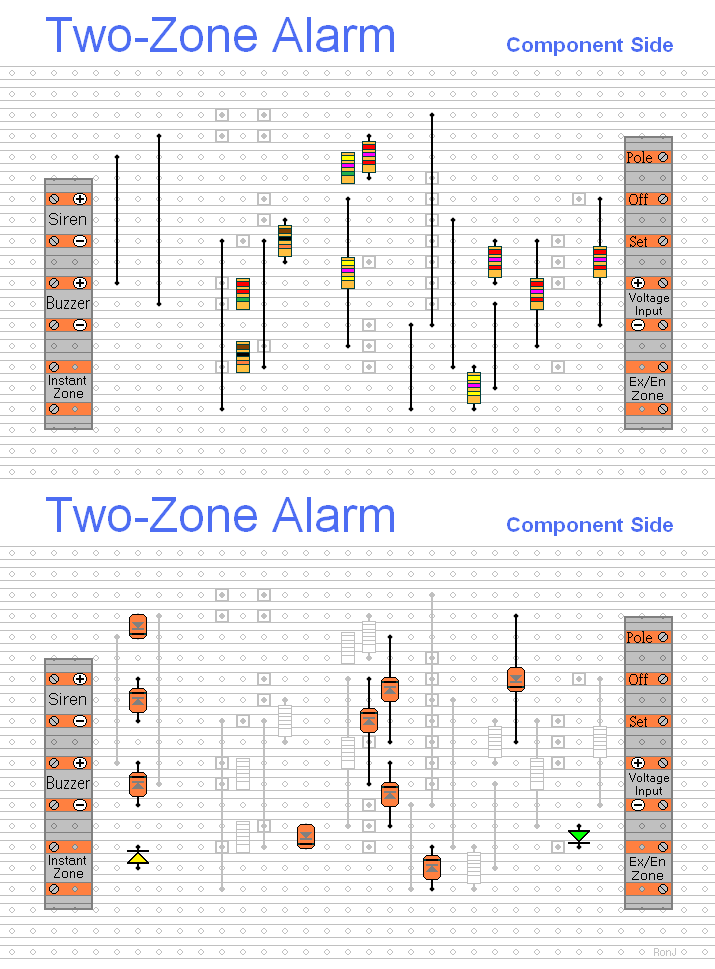
The next stage is to fit the nine diodes and the two LEDs. Pay particular attention to the orientation of both the diodes and the LEDs. Note that three of the diodes and one of the LEDs are pointing down.
You'll want to mount the LEDs where they can be seen - perhaps on the front of your alarm-panel. Connect them to the circuit board with the cores from a piece of alarm cable. Twist the wires into pairs to keep them tidy. They can be attached to the board from the front or the rear. Make them long to begin with. You can shorten them later when you assemble your alarm-panel.
Next - fit the remaining nine components (transistors, capacitors, relay and IC socket), Using a socket reduces the chances of damaging the IC - and makes it easier to replace if necessary. The PNP transistor (BC557) is the one with its emitter arrow coloured red.
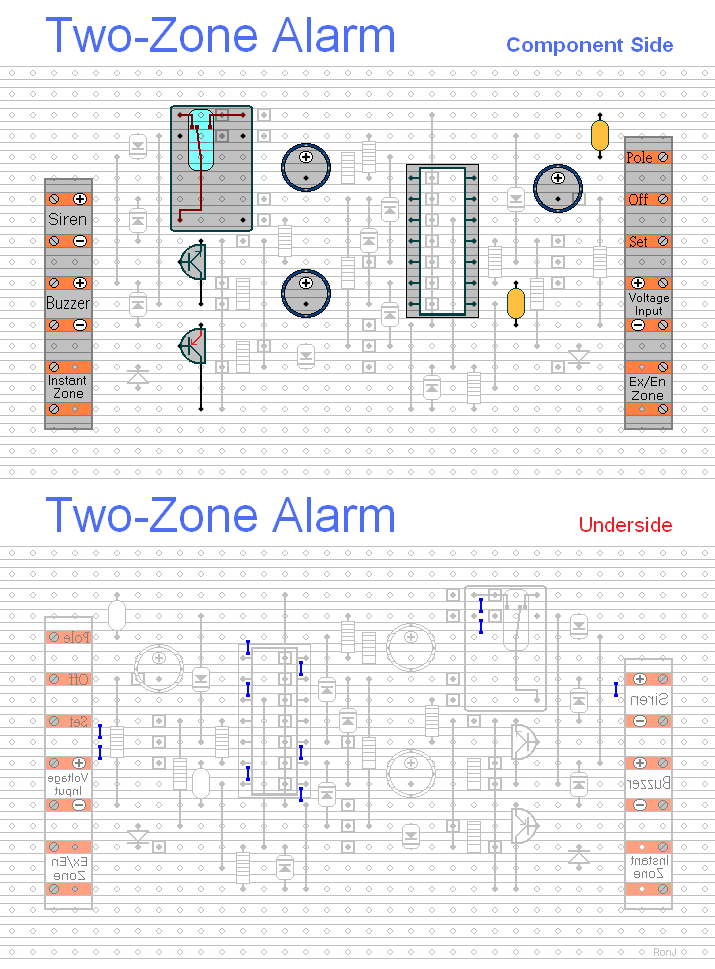
Turn the board over and examine the underside carefully - to make sure that there are no unwanted solder bridges or other connections between the tracks. If you backlight the board during the examination - it makes potential problem areas easier to spot.
When you're satisfied that everything is in order - add the eleven solder bridges to the underside of the board. These are just small blobs of solder. I've used them to connect adjacent tracks. They are a simple and convenient alternative to wire links.
Finally - insert the Cmos 4093 into the socket. Make sure that pin 1 is in the top left-hand corner - and check very carefully that all of the pins are correctly inserted into the socket. Sometimes - instead of entering the socket - a pin will curl up underneath the IC.
You Are Now Ready To Test Your Alarm
External Connections
